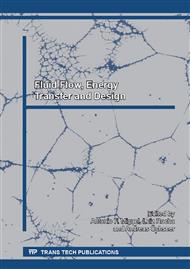p.189
p.216
p.226
p.232
p.245
p.261
p.273
p.279
p.285
The Roles of CFD in Enhancing Teaching and Learning Process and its Potentials in Solving Real Engineering Issues
Abstract:
Computational fluid dynamics (CFD) is able to enhance unseen problems using numerical methods and algorithms in solving fluid dynamics which is related to real engineering life. Implementations through experiments are very costly. However, due to constraint in space problem, time and money, CFD is economic for engineers, especially young employer in current trends of teaching and industries globally. This research is focusing on CFD education that contributes to solve real engineering issues. A few strategies are projected in CFD for teaching and learning by validation and comparison analysis. The performance of experimental validation are different from traditional experiments and testing. Some variables such as Reynolds number, turbulence kinetic energy, coefficient of variation and cavitations number are parameters which can be detected in a CFD approach. The results from CFD are validated by experiments or real world and by comparison with other software.
Info:
Periodical:
Pages:
273-278
Citation:
Online since:
January 2014
Authors:
Price:
Сopyright:
© 2014 Trans Tech Publications Ltd. All Rights Reserved
Share:
Citation:


